- Home
- slideshows
- miscellaneous
- Manhattan is building a massive $1 billion wall and park to guard against the next inevitable superstorm
Manhattan is building a massive $1 billion wall and park to guard against the next inevitable superstorm
Plans for the BIG U consist of two main parts: the East Side Coastal Resiliency Project (which will stretch along the East River from East 25th Street to Montgomery Street) and the Lower Manhattan Resiliency Project (spanning Montgomery Street to Battery Park City).

In late March, Manhattan’s Community Board 3 approved BIG's designs for the East Side Coastal Resiliency Project (ESCR) portion.
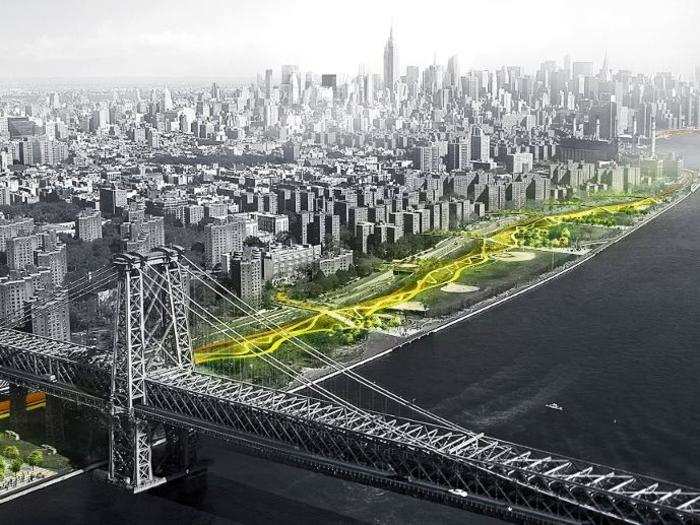
The goal of the ESCR is to not only prevent flooding in the low-lying areas of Manhattan, but also to revitalize the existing park space along the East River.
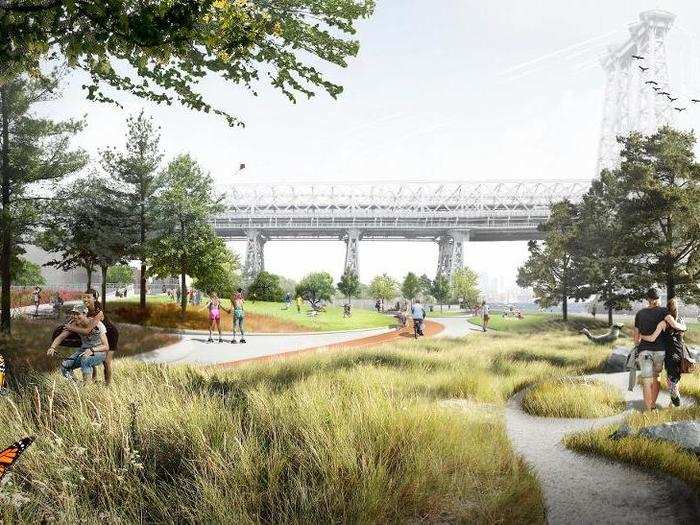
The ESCR will add 11 blocks of green space ...
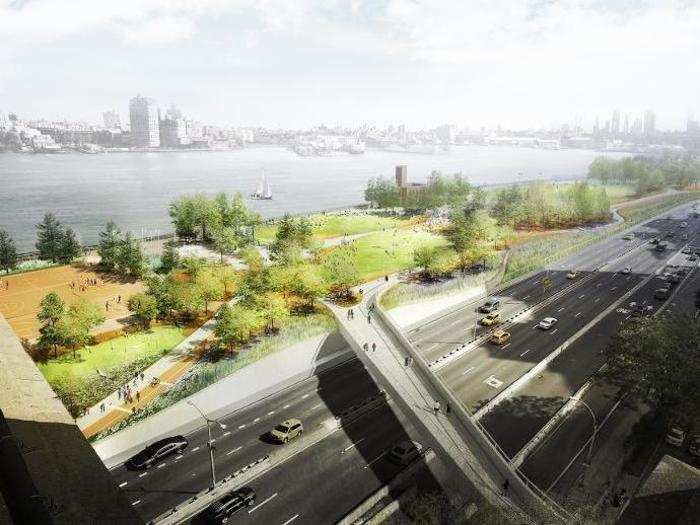
... which will help soak up floodwater.
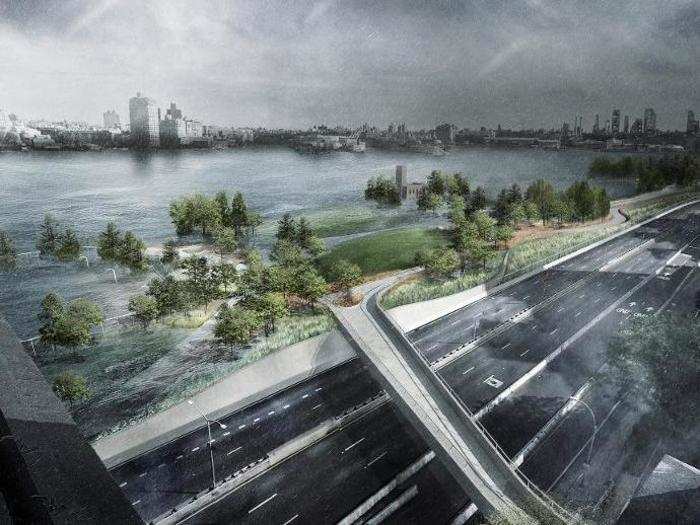
There will be biking and jogging trails, too.

A new floodwall will range in height from three feet to eight feet tall.
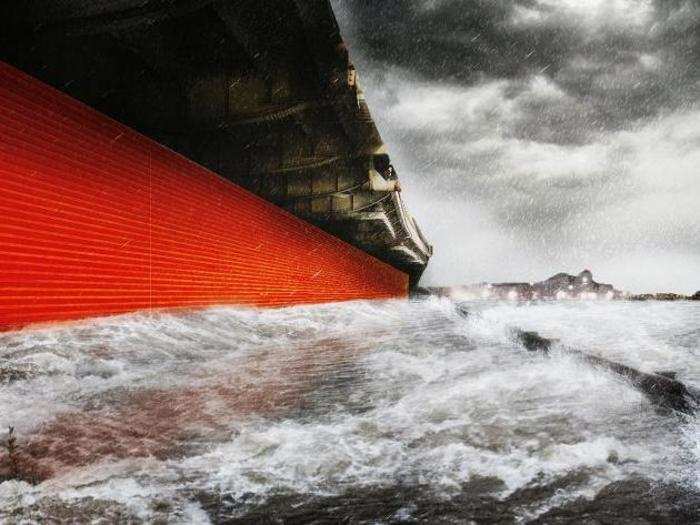
The plan also calls for a series of levees, embankments that prevent the overflow of water, near the wall.

Another building near the East River will provide free solar power for the public 24-7, and especially in the event of another major storm like Sandy.
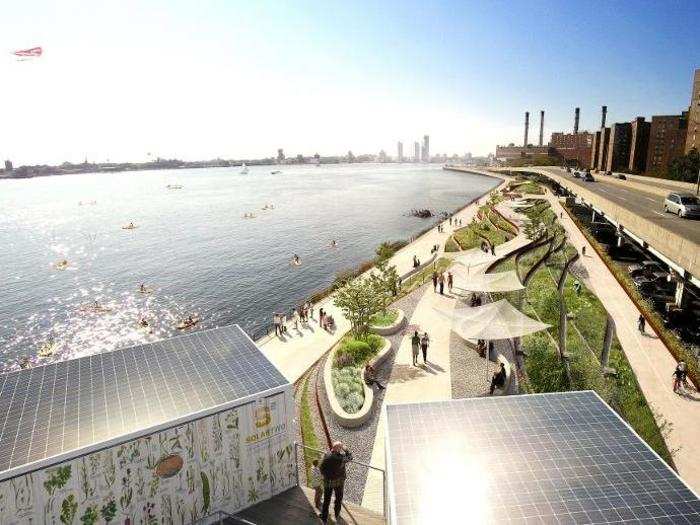
Construction on the facility — which will also include rooms for environmental classes, a gallery, a cafe, a kayak launch area, and offices — will start in August 2018.
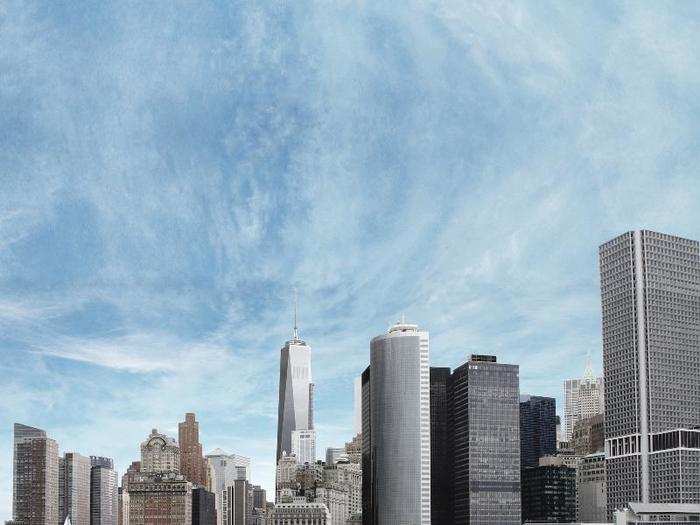
Construction on the ESCR is set to begin in spring 2019 and wrap up by the end of 2024.

The second portion of the BIG U, dubbed the Lower Manhattan Resiliency Project, is still in the design phase.
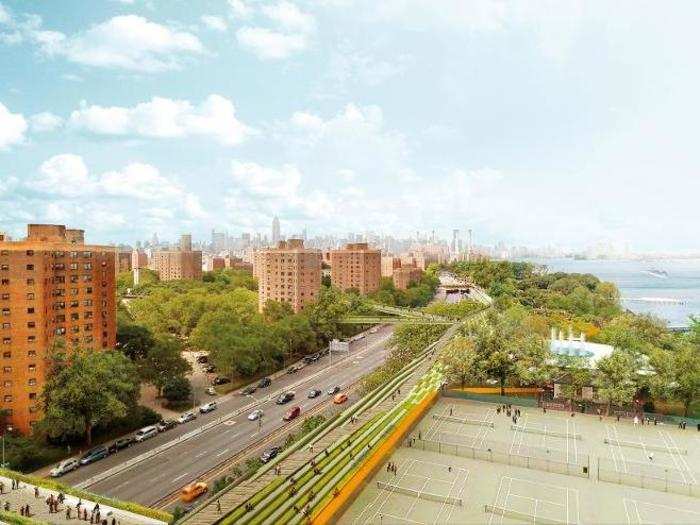
Manhattan is building a massive $1 billion wall and park to guard against the next inevitable superstorm
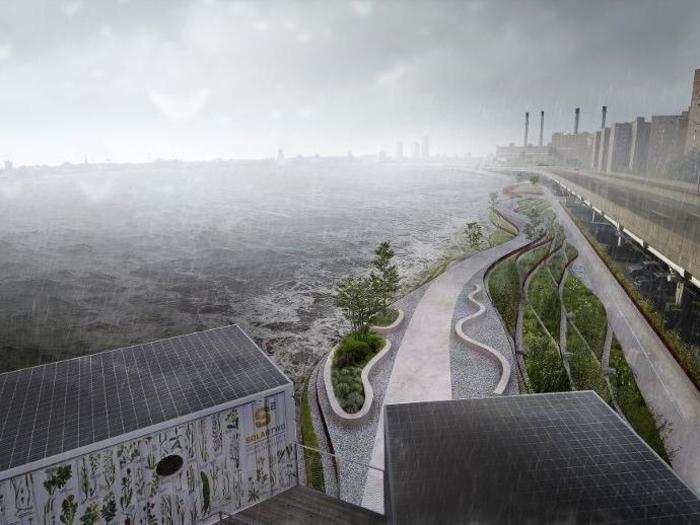
Siegel's team is eyeing for the city to approve the final designs some time this year, with construction starting in 2020.
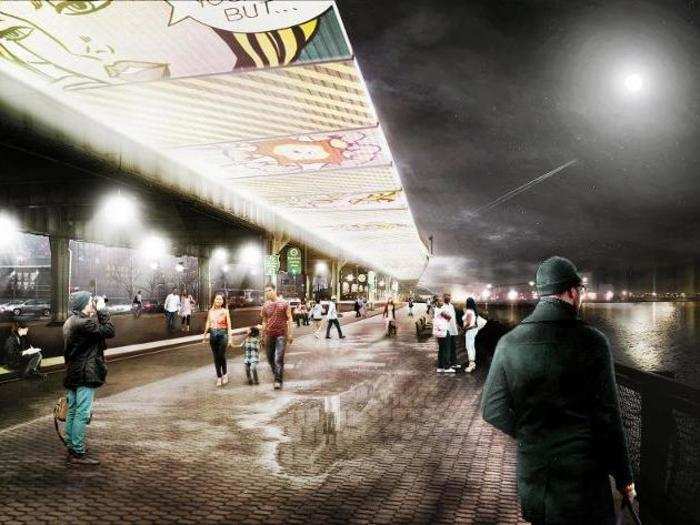
The BIG U is envisioned as a possible solution to New York's rising seas, as well as a way to make the city more resilient in the face of future storms.
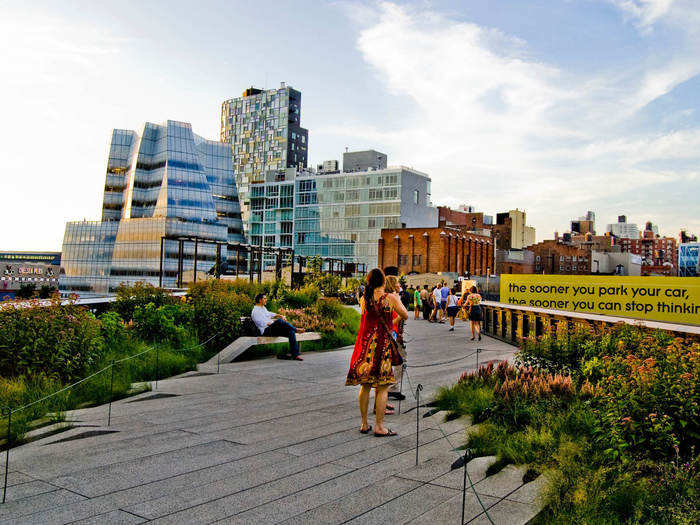
NYC is already seeing the effects of climate change.
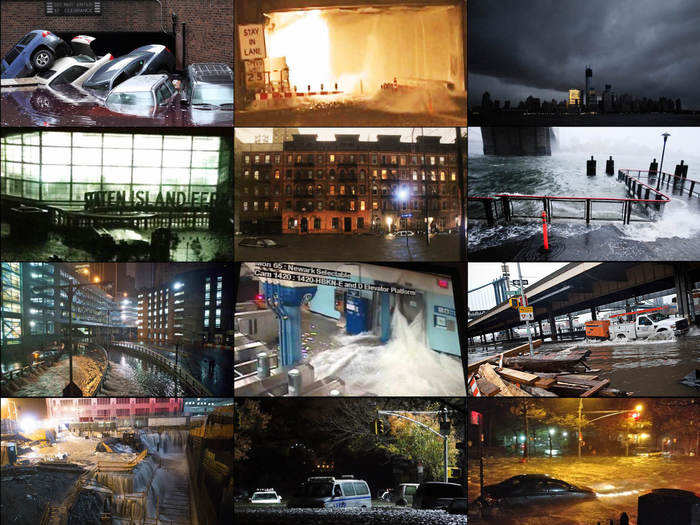
Global warming, caused by the release of carbon-dioxide into the atmosphere, is causing seas to rise and storms to intensify around the city — like most coastal areas in the US.
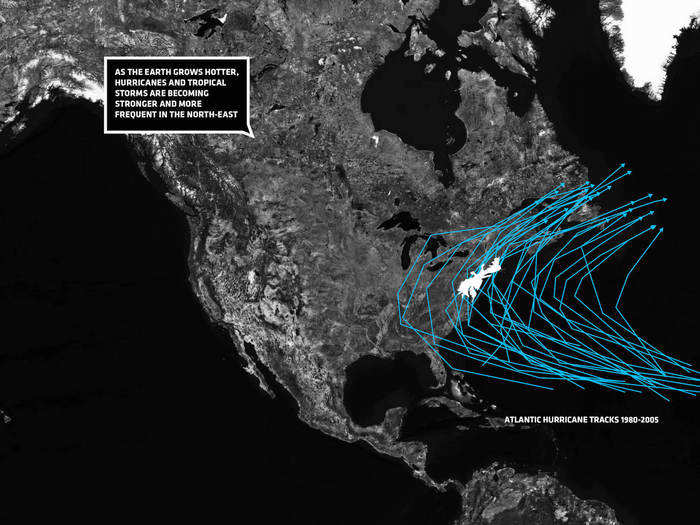
According to the New York City Panel on Climate Change, sea levels will increase between 8 to 30 inches by the 2050s and up to 15 to 75 inches by the end of the century in NYC.
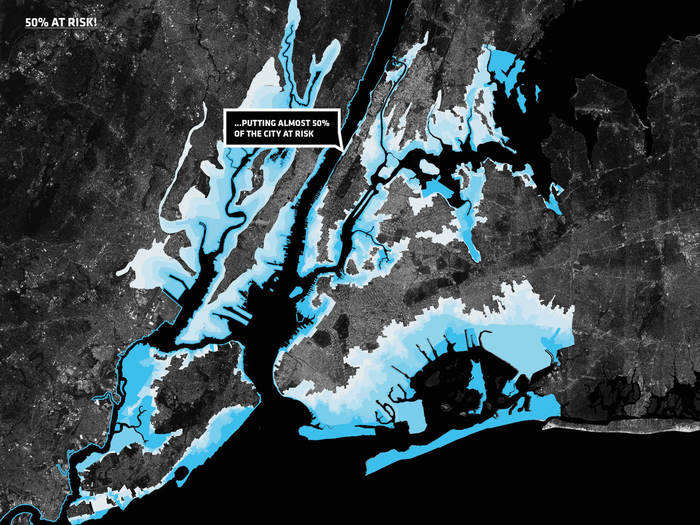
Source: The City of New York
Another recent study from a group of renowned climate scientists projects that by 2030, 7.5-foot floods will happen every five years in the city.
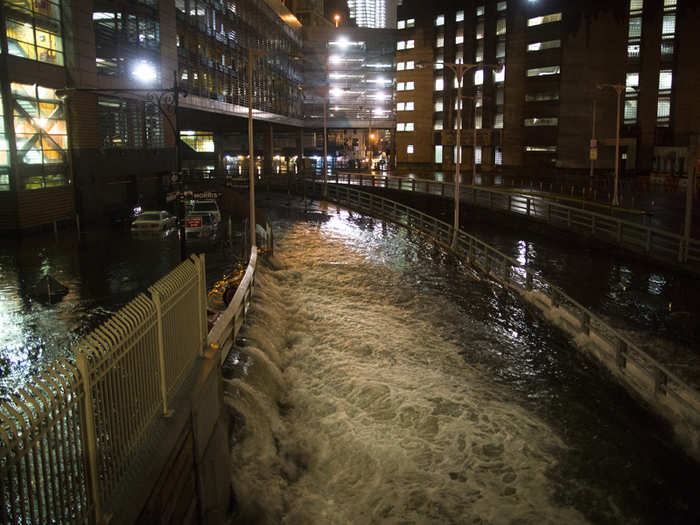
Source: National Academy of Sciences
In the past decade, NYC has experienced 7.5-foot floods several times.
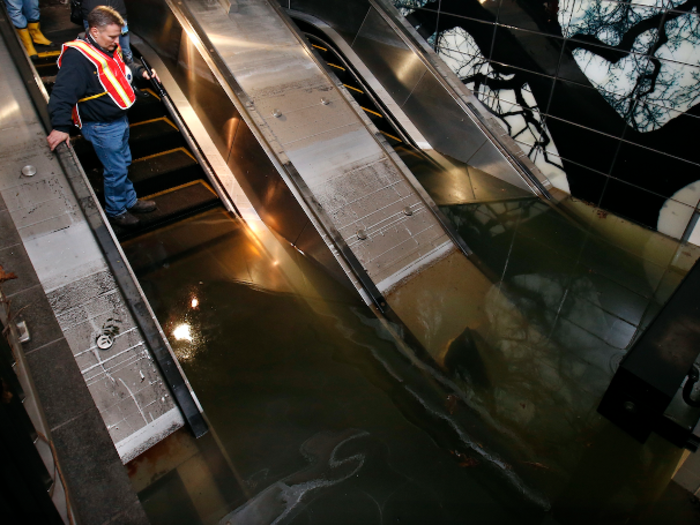
Hurricane Sandy, for example, brought 10-foot-floods to much of Manhattan, Brooklyn, and Staten Island in 2012, killing 43 people and damaging over 88,000 buildings.
While the BIG U will help guard Manhattan during future superstorms, the project — which is part of Mayor Bill de Blasio's OneNYC sustainability plan — has received some criticism.

In 2016, the New York City Environmental Justice Alliance, a group of organizations that advocate primarily for low-income communities of color, conducted a sweeping analysis of OneNYC. At the time, Politico reported that the group cited the BIG U as an example of a project shortchanging neighborhoods in Brooklyn and Queens that are more in need of coastal-resiliency efforts than Manhattan. (The BIG U aims to protect areas near Wall Street.)
Other critics say that the BIG U isn't robust enough to withstand flooding in the long-term. The project is designed to protect against a 100-year flood (i.e. one that has a 1% chance of happening in any given year).
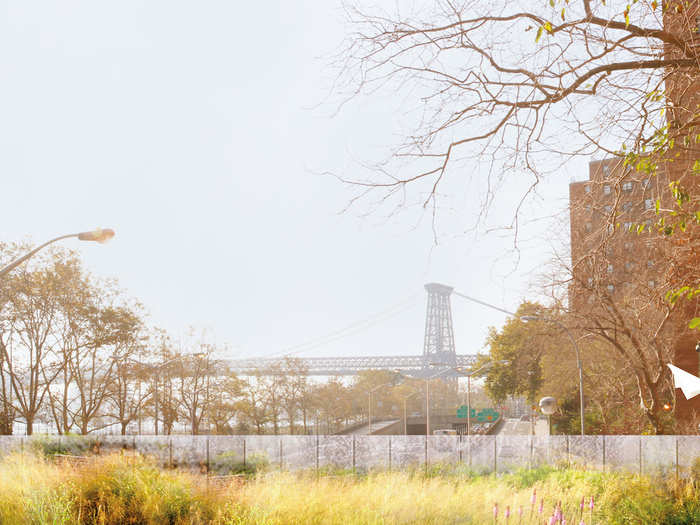
As FiveThirtyEight notes, the 100-year floodplain can be a limited way of looking at flood risks, because a lack of historical data can lead to a higher margin of error.
And a number of architects and urban planners have said that the BIG U's high cost and level of complexity could hinder its construction.
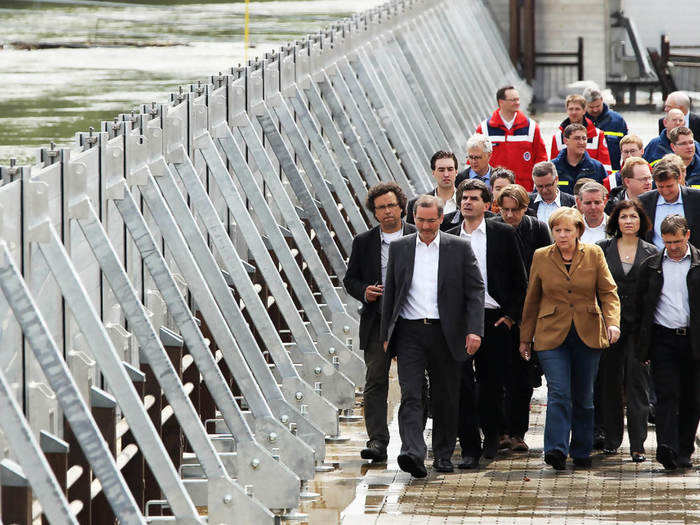
In an 2016 interview with Rolling Stone, one architect predicted, "When it’s done, it’s just going to be a big dumb wall."
Siegel said his team's biggest challenges are coordinating with multiple agencies across the city, as well as the fact that the city's need of a resilient park is new to stakeholders.
The city has dedicated more than $400 million toward the BIG U's first phases, and the federal government has given $511 million.
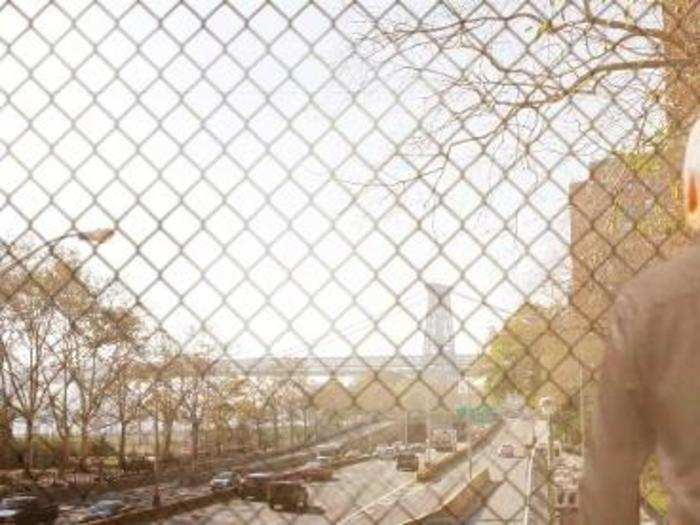
Siegel hinted at another possible roadblock: the Trump administration's reluctance to fund projects that would make cities more resilient to climate change.
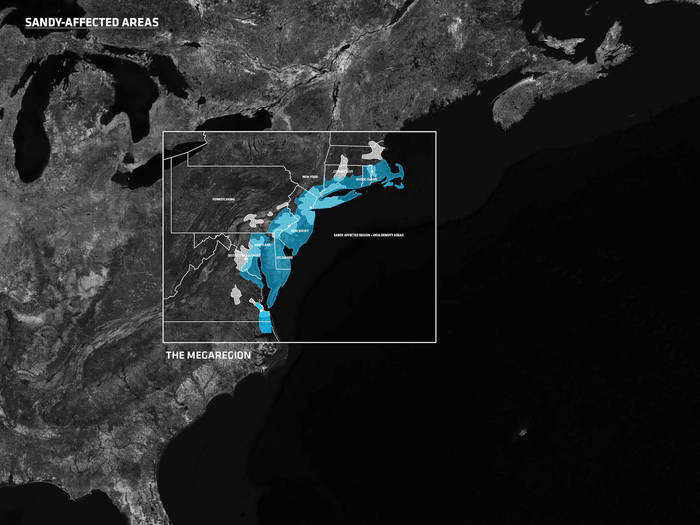
"This work started under the Obama administration, but now under the new administration, the sources of funding for climate change adaptation are not really there," he said. "So the city is figuring how to pay for these kinds of projects."
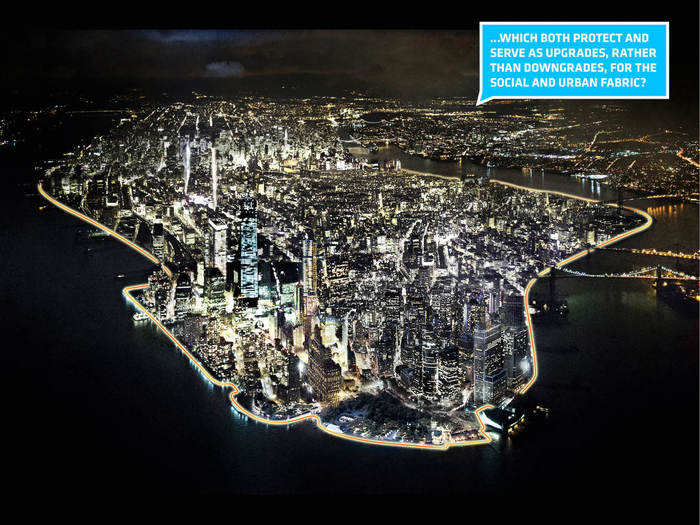
Popular Right Now
Popular Keywords
Advertisement